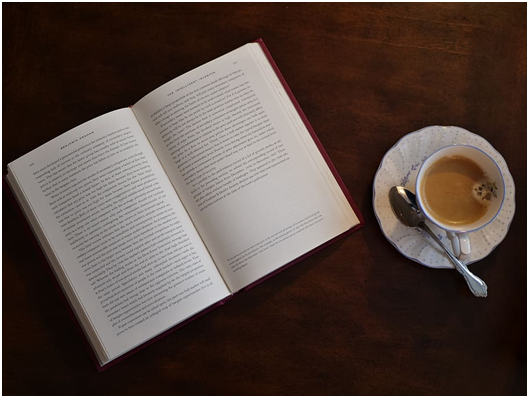
There has always been a degree of uncertainty about the difference between biography and autobiography and memoir.
Deep down, everyone knows they are different, but the words are often used interchangeably.
You might not realize it, but mistaking one for the other means you’ll not only target the wrong audience, but might also lead to lawyers knocking on your door!
If you’re stuck wondering how to start a biography or autobiography or a memoir, you’re not alone. Most writers would admit that writing the first few paragraphs is the hands down the most challenging bit. You have to make sure the story flows impeccably, is accurate, has enough drama to be keep readers reading, and most importantly, is structured right.
Table of Contents
Difference Between a Biography and Autobiography and Memoir
Not only are the three different in terms of tone, flow and context, but also how you publish and market your book to the relevant audience.
Marketing under the wrong label falls under misrepresentation of facts – or the classic term i.e. fraud. It might not be a severe case of fraud, but might still make you susceptible to a lawsuit.
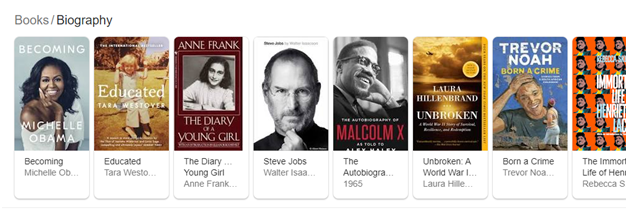
Even on Google, if you search for one term, chances are that the results will include the other as well, as you can see in the screenshot above. I looked up biography, but there are autobiographies included in the results as well.
What Is a Biography?
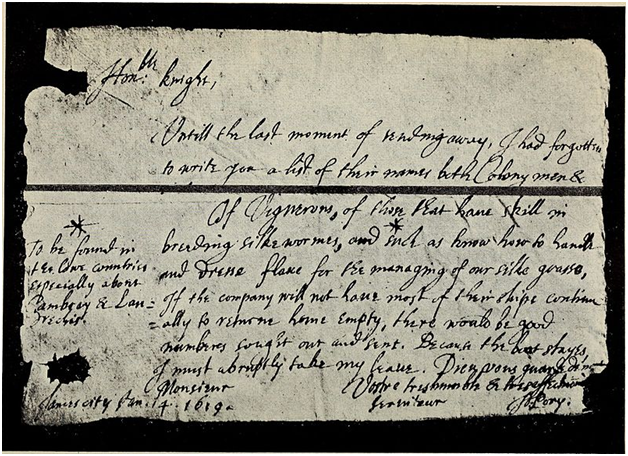
Biographies are now called bios in short, and can be considered as a text that gives the readers an account of someone’s life. And therein lies the difference; a biography is usually written in third-person format, i.e., about someone else’s life. Therefore, researching for a biography is crucial and naturally, it can be a bit challenging.
Here, you need to be careful as you’re using someone else’s intellectual property and portraying it in a more compelling manner. Think of it as writing about your neighbor, a politician you like or an influential person. It is supposed to be non-fiction and usually serves to help people understand the hardships your biography’s subject went through on the road to becoming who they are.
To get started, read up on the following key features of biographies.
- It is a true account of the subject’s life. This is why there might be lawyers involved, if you do it wrong or without permission, where permission is needed.
- Usually written by someone who is close to the person or has studied their life extensively.
- Can be written without consent, but in this case, the writer can’t delve into personal details. Usually, authors take permission from their subject in order to paint a more accurate picture.
- If written without consent, the author must only use information available in public records, i.e., information made public. This may also include any court proceedings. The Biography of Ted Bundy is a great example of this. In these biographies, very little personal information is shared. On the other hand, the book “Ted Bundy: In Conversation With a Killer” has personal information included, since it is based on over 150 hours of interviews with him by Stephen G. Michaud, Hugh Aynesworth.
- The industry standard is that biographies are written in third person and are very objective. If the book starts taking sides, it becomes a memoir or an autobiography, expressing your opinion.
- The main purpose of a biography is to inform and educate, not express feelings or build sentiments. Hence the objectivity.
What Does a Typical Biography Include?
Biographies may be written on a variety of different events and happenings in the subject’s life, or even those of their family.
As with any other art form, when writing a biography, the blank MS Word or physical paper is your canvas; you will guide the reader and tell them what you have to say.
Some bits that you can include, regardless of whether you have consent or not are:
- Key events that the subject is well known for or you think they should be known for
- Date and location of birth
- Education
- Work life and how it impacted whatever key event you are expressing on, and anything you think the readers may want to know but the subject hasn’t made significant efforts to conceal.
These are just what your run-of-the-mill-biographies include. To make things interesting, you need to add drama, make things emotional and present facts in the most compelling manner possible.
Just stating that “Mr. X was married to Mrs. Y and had two children” won’t have the same effect as going into a little more depth and putting some emotion in it. “Mr. X first saw Mrs. Y and they didn’t click. But after a few years, they met again at a restaurant, and it all went smooth from there. Eventually, they got married and were considered to be one of the ‘cute couples’.”
This is just an example of how you can elaborate on any given fact to make it seem more interesting.
Researching for a Biography
When writing about someone famous, you can find almost everything about them online. From their addresses and agent contact information all the way to what their favorite t-shirt is, TV show, anecdotes and more.
Some sources that you can use for writing a biography include:
- Interviews
- Letters published online
- Facebook or other social media platform posts
- Photographs shared online or with other people (not in confidence)
- Other biographies, if any
- Newspaper articles and sections
- Magazine sections and more.
Let’s say you want to write a biography about James McAvoy without his express consent. Your research would include the following steps:
Step 1: Just Google It
Once you have made your mind about wanting to write a documentary on him, one of the first things you should do is Google the name.
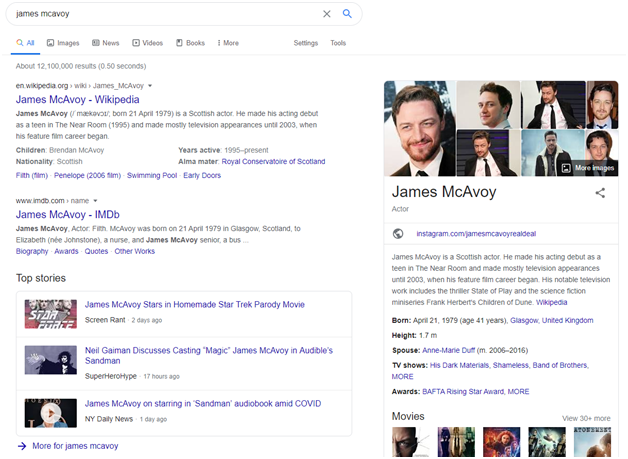
You’ll get pages upon pages of data. The beauty about Googling your subject is that whatever information you get is public information and you aren’t accountable if you compile it into an interesting biography.
Of course, do vet your sources beforehand. For instance, I do not recommend my writers use Wikipedia, even though its dependability has improved much recently.
I’d rather they head to the resources section of a Wikipedia page (small numbers, which will redirect you to the bottom of the page once you click on them), open those links and use those sources.
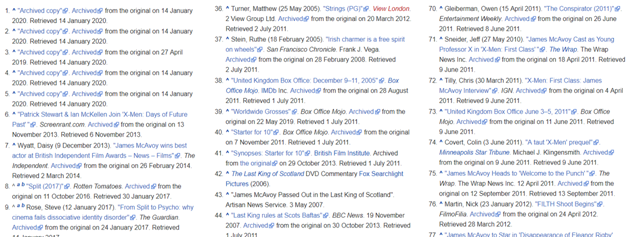
Only use information you find on reliable websites, not those that are known for speculating or spreading false information.
Note down or bookmark pages you need and then move on to the next step. We recommend that you don’t start writing yet, since you still need to figure out how to structure your biography. I always tell my team of ghostwriters that being over-prepared is always better than being under prepared. Conduct your research and take your time with it.
Step 2: Sifting Through Social Media
“Stalking” is a very ugly word, but unfortunately, that’s what you’ll be resorting to.
It would probably be an offense if you were focusing on what the subject of your biography was doing, instead of what they’ve done already.
Whether you’re researching on Facebook, Twitter, Instagram or any other social platform, look for important posts. Try to find quotes if you can. If there aren’t any, look for posts that tell you more about the subject’s interests and hobbies.

If the subject of your biography isn’t alive anymore, you can perhaps find groups people have made in their honor. These are usually hardcore fans of these people who regularly post something to keep interest levels and engagement high. From Martin Luther King to Vlad the Impaler, you can find a group somewhere on the internet about them with a little effort.
Here’s an example; a fan-made page about J. R. R. Tolkien.
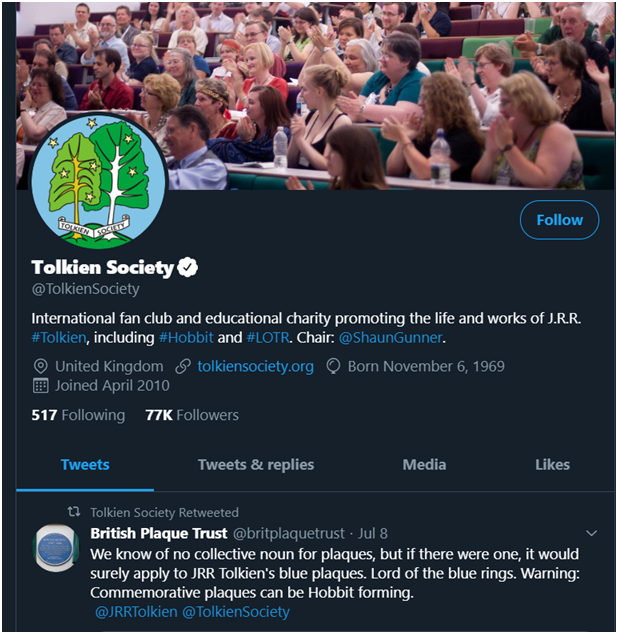
Step 3: Find Books & Other Writings About Them
Usually, people like James McAvoy attract writers who are fan-boys, not those looking to present facts about his life. If you search for a biography about the actor, you won’t find a proper biography about him, so you’re going to have to start from scratch.
If, however, you’re looking to present a new perspective on a famous personality, such as JF Kennedy, Albert Einstein or even Genghis Khan, you can find a plethora of biographies by other authors.
Go through them to get a better idea about your competition.
Find other writings about your subject and pick out things you need to complete your bio.
Step 4: Write
By this time, you should have completed your research and now that you have everything you need, it’s time to start writing. Take your time and make sure all ideas are complete and connect well.
Compile it, make it presentable, and ensure it’s an interesting read. This is where your skills really get tested. It can get messy, long, tiring and frustrating to finish, no matter how well you’ve done your homework.
It’s okay to ask for help. Our biography and autobiography writing services can be the key behind your project seeing the light of day.
Did you know: Despite popular belief, a biography doesn’t have to be in the form of a book or video, but can also be a song or a poem? Don’t have the patience to write a whole book or make a video but have a musical ear? You could write or have a biography song written in no time!
What Is an Autobiography?
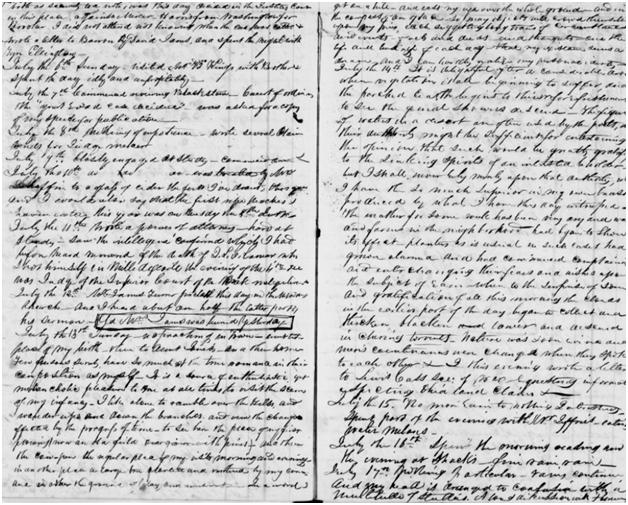
An autobiography is similar to memoirs; in that memoirs too try to establish an emotional link with the reader.
So the next time someone asks you what an autobiography is, tell them they are the means for you to tell your own story in the form of facts with emotions. It’s usually told in first person with the author as the main protagonist; or even the antagonist in some cases. This is supposedly a true account of the subject’s life.
Both biographies and autobiographies fall under narrative nonfiction, meaning both stories are true and have some degree of storytelling involved.
How is an autobiography different from a biography? While you need to be careful when writing biographies that you don’t accidentally include any information that you aren’t allowed to, in autobiographies you are allowed to write whatever you want since you’re writing about yourself.
If you’re have your autobiography ghostwritten, the writing team can include whatever you tell it without worrying about copyright issues, since after all, it’s your life and you own the rights to the finished works.
When authoring your own autobiography or having one written, it is important to remember that there are three main elements that you should identify before you start writing:
- A protagonist, i.e., you yourself
- A central conflict i.e., the problem they faced, and
- Intriguing characters, each with their own personality.
Here, you want to instill emotion instead of just plainly stating facts. Even if you are writing down facts, make it interesting. Here is an example.
Instead of writing “There were 98 attendees standing in front of me while I gave my first speech,” write something with more flair, intrigue, and most importantly, emotion. “As I stood behind the microphone, ready to tell them that ‘I have a dream’, a bell rung at the back of my mind, telling me that there were 98 attendees standing in front of me. A part of me wished it was a full 100, but another part of me was scared of such a large audience.
“This was the first time I was about to make a speech, and that too, in front of so many people. I was scared. A shudder ran through my spine, before I decided, ‘let’s see where this goes’, and began.”
What Does a Typical Autobiography Include?
Autobiographies are usually written on the subject’s whole life and the interesting bit usually comes in the middle somewhere or near the end. For example, Mein Kampf by Adolf Hitler is divided into two sections:
- One where he was in jail and how he got into power. Here, the author tells us a little about his school of thought and insights into his own personality.
- Second, where he was in power and his ideology, along with the difficulties he faced when in power.
The autobiography’s subject usually helps the writer compile everything and both of them collaborate; one who excels in the story, while the other who has excellence on paper. If the author isn’t alive, a family member or close friend who knows almost everything about the subject becomes the story expert.
Furthermore, autobiographies usually sum up the subject’s complete life, to the present day or up until their death. An autobiography often begins when the author is young and includes detailed chronology, events, places, reactions, movements and other relevant happenings throughout the author’s life. But all of this isn’t necessarily organized in chronological order.
Autobiographies usually host old photographs, memorabilia, letters and more to make it more interesting and real. It’s as simple as scanning those things and incorporating them within. The prime source of information? The subject’s own memories.
Some key features of an autobiography include:
- First-person view of the author’s/subject’s life.
- Relatively more informal than a biography, but more formal than a memoir. Facts and emotions go together here.
- A much broader timeline and freedom to use that timeline. This may include flashbacks, dreams and more.
- Although emotions are a major part of an autobiography, the main focus is still the facts and happenings of life.
- In the biography vs autobiography battle, autobiographies are usually more preferred than biographies.
- The subject is directly or indirectly involved in the writing process.

Writing a Good Autobiography
Some autobiographies start somewhere in the subject’s youth, while some authors start all the way from their childhood, i.e., the environment in which they were born and raised, school, college and more.
Most people who have autobiographies to their name don’t necessary write it themselves since they don’t have much time. There are some who write, mind you, but most choose to hire a writer. Documents and memories are compiled, images and letters scanned, and most importantly, a structure given to the story, all of which is passed on to the autobiography writing services or ghostwriters. And that’s about it. The rest of the burden is the writer’s.
You will have to keep checking on how the autobiography is going from time to time. Autobiography writing services usually send regular drafts so that you can keep tabs on what was added in which draft and whether or not you like how it is flowing. After all, if you’re not convinced with the writing, how will others be, right?
What to Expect When Getting an Autobiography Written
In the battle between biographies vs autobiographies, the latter wins the prize for being more dramatic, creative, emotional, and for giving writers more freedom of expression.
In the drafts you’ll get from autobiography writing services, or when going over what you yourself wrote, look for the following:
- Check the flow.
- Make sure all the details you wanted added are added. If any artistic liberties have been taken, make sure they are within reason and that if anyone asks, you can justify them.
- Make sure all the facts written in the autobiography are true. Overplaying emotions is one thing, overstating facts and figures might end up getting you in trouble.
- Make a compelling table of contents. Try to make short headings, but with meaning.
- Another difference between biography and autobiography; make sure the read is interesting. That it has an introduction, a climax and a proper ending.
- Include a foreword where you tell why you’re writing this. What will the reader gain from reading your autobiography?

Memoir – What Is It & Does It Fall in the Same League?
I can’t possibly wrap up this autobiography vs biography comparison without addressing the third self-narrative writing type; a memoir.
I’ll keep this section short, but it’s important we address the elephant in the room.
When you look at biographies and autobiographies objectively, you’ll notice that the main difference between the two, other than who narrates the life story is emotion, i.e., how it’s told.
While the former is very formal, the latter is less formal and more inclined towards pulling at the heartstrings. Yet, it isn’t as informal as a fiction novel would be. The story isn’t the main focus of either two, but the personality behind the story is.
But what if you want the story to be the main focus? What if you want to send a message not via the person, but via the story, yet keep it real at the same time?
That’s where a memoir comes into play.
Memoirs focus much more on emotion than facts, and while facts are there, they aren’t the main focus. It’s the journey that counts here.
Memoirs are the same in essence, only a little more informal, but unfortunately, they don’t really stand in the same league as biographies and autobiographies. Memoirs don’t necessarily start from scratch, but from a certain point in the author’s life where the climax is; the lesson of the story, if you will.
It is mostly reflective and written in hindsight rather than presenting the facts as is. If the author made a mistake, it will be pointed out in the memoir. Memoirs might read more like a novel to some.
Putting the Debate to Bed
When it comes to biography vs autobiography vs memoir, there is a long line of things on either side of the margins. The takeaway, though, is the tone of the storytelling and use of emotions.
If you’re to get your story out there, you need to understand the difference between a biography and autobiography and memoir, to be able to identify your requirements better and in the end promote your book accordingly.
As far as putting pen to paper is concerned, I recommend that you leave it to expert biography and autobiography writers at CDP. Simply get in touch, call us, or chat to our representative for a free quote.
